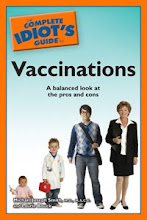How much freedom should teenagers have? They're certainly not children, but they're not yet adults either. Teens have less life experience and exercise poorer judgment than adults, even as they crave access to the adult world.
Experience and good judgement are especially critical in two areas that virtually define modern American adolescence: internet use and driving. The American Academy of Pediatrics' microsite on internet use for Internet Safety Month in June points out a range of problem behaviors that teens might encounter or engage in online, such as cyberbullying, online solicitation, and "sexting" (exchanging inappropriate or sexually explicit pictures of children and teens). The solution? Talking with your teenager about cyber safety and privacy, and monitoring and limiting the use of computers and cell phones.
Driving is also hazardous to teens' health, with car crashes the top cause of death in teens ages 15-19, according to Mothers Against Drunk Driving. Inexperience, distraction from other passengers in the car, cell phone use or texting while driving, and underage drinking all contribute to this problem. Graduated driver licensing (GDL) programs, now commonplace in most states, can make a difference in protecting teen drivers and others around them. For teenagers under age 18, these programs create curfews for night-time driving (when the risk for crashes increases in this group), limit the number of teenaged passengers in the car, and delay access to drivers' licenses if teens are cited for moving violations while they have their learner's permits. These rules force teens to build their driving skills up slowly until are mature enough for unrestricted driving. In some states, parents can also request a copy of their teen's driving record to see how they are doing.
Teenagers (and perhaps their parents) might chafe against restrictions and oversight, but these are the most effective ways to keep teens safe until adulthood. In one study in upstate New York, for example, a GDL program decreased injuries among 16-year-old drivers by 31%. These are also public health measures, protecting others from mistakes that teens might make. It's good to see American society figuring out practical ways to give adolescents both freedom and protection as they wend their way toward adulthood, a path that seems to become rockier with each new generation.
Subscribe to:
Post Comments (Atom)




1 comment:
I couldn't agree more, well written and thoughtful article
Post a Comment